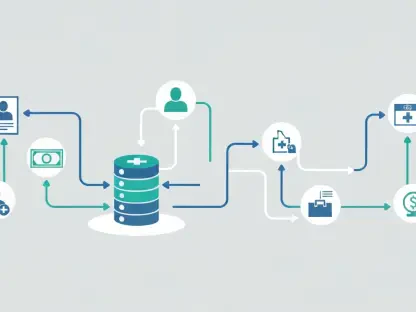In the ever-evolving landscape of artificial intelligence, the capabilities of AI chatbots extend beyond simple conversations. Today, they are becoming increasingly proficient in programming tasks, aiding developers in writing, debugging, and understanding code. This article dissects the performances of various AI chatbots in coding scenarios, offering insights into which tools are most dependable for programming support.
The Importance of Reliable AI for Coding
AI chatbots have the potential to revolutionize how developers approach coding tasks. From automating monotonous tasks to providing intelligent debugging solutions, these tools can significantly enhance productivity. But not all AI chatbots are created equal. Understanding which ones can be relied upon for different tasks is crucial for any developer looking to integrate AI into their workflow. This detailed analysis by David Gewirtz sets the stage for identifying the best AI chatbots for coding, evaluated through rigorous tests simulating real-world programming situations.
Reliable AI for coding is not just a convenience; it’s a necessity in today’s fast-paced development environments. With the increasing complexity of applications, having an AI capable of understanding and generating code can drastically reduce time spent on tedious tasks. Such efficiency not only speeds up development cycles but also minimizes the margin for human error. Reliable AI support allows developers to focus more on creative and innovative aspects of their projects, confident that the chatbot can handle the operational details. This leads to a new paradigm where developers and AI work hand in hand to produce high-quality, efficient, and robust applications.
Testing Methodology: A Thorough Examination
Gewirtz’s evaluation involves a series of comprehensive tests designed to challenge the AI’s coding muscles. These tests include creating WordPress plugins, generating regular expressions, and debugging pre-written code. Each chatbot is assessed for its ability to understand the task, generate accurate and functional code, and handle debugging scenarios effectively. This methodology ensures that the chatbots are examined under conditions closely mirroring real-world usage, providing a clear picture of their practical utility.
The rigorous testing framework laid out by Gewirtz involves multiple dimensions of programming. By pushing the chatbots to write code for real-world applications like WordPress plugins, the tests evaluate how well these AI tools can integrate with widely used platforms. Generating regular expressions showcases their ability to handle detailed and precise string manipulations, often a challenging task even for seasoned developers. Debugging tests further examine the AI’s proficiency in recognizing, diagnosing, and fixing errors in code, a critical aspect of any development workflow. This multi-faceted approach ensures a holistic evaluation of each AI’s coding capabilities.
Performance Differences: Paid vs. Free Versions
One of the significant findings from this analysis is the performance disparity between the paid and free versions of the AI chatbots. Paid versions like ChatGPT Plus and Perplexity Pro generally outperformed their free counterparts. The enhanced models and capabilities accessible through paid subscriptions often make a noticeable difference, especially in complex tasks. However, the free versions still offer substantial assistance for less demanding scenarios, highlighting the accessibility and utility of these tools for a broader audience.
For developers on a budget or those experimenting with AI for the first time, free versions of these tools provide a great entry point. While they might not match up to their paid siblings in terms of advanced capabilities, they still deliver competent support for basic tasks. This accessibility democratizes AI, allowing a wider range of users to benefit from the technology without financial strain. Nevertheless, as tasks grow in complexity, the investment in paid versions becomes justified by the higher success rates and sophisticated functionalities they bring to the table. This cost versus performance analysis is critical for developers making informed decisions about which AI tools to integrate into their workflows.
Leading the Pack: ChatGPT Plus
ChatGPT Plus emerges as the top performer in this review, consistently delivering accurate and functional code across all tests. Priced at $20 per month, it utilizes advanced models such as GPT-4 and GPT-3.5. This tier not only provides reliable coding support but also includes a dedicated Mac application, enhancing user experience by offering an interface free from browser constraints. Despite occasional issues like “hallucinations”—where the AI might generate nonsensical or incorrect information—ChatGPT Plus remains a robust tool for programmers.
The versatility of ChatGPT Plus extends beyond its functionality. Its dedicated Mac application allows for smoother interaction and better integration with other development tools, further enhancing productivity. By isolating the chatbot from browser-based interruptions, users can maintain a more streamlined workflow. Even though occasional hallucinations exist, developers have learned to mitigate these risks through careful prompt engineering and cross-checking responses. This makes ChatGPT Plus not only a leader in AI-assisted coding but also a reliable partner for developers looking to maximize their productivity while minimizing errors.
The Strong Contender: Perplexity Pro
Perplexity Pro also demonstrates significant potential, particularly noted for its capability to switch between multiple LLMs like GPT-4 and Claude 3.5 Sonnet. This versatility allows users to select the best model suited for a given task, thereby testing the robustness and accuracy of generated code. Although Perplexity Pro’s reliance on email-based logins and absence of multi-factor authentication and desktop applications holds it back, it remains a strong choice for those requiring versatile and reliable coding support.
Perplexity Pro’s strength lies in its adaptability. By offering flexibility in choosing different language models, it empowers users to tailor the AI’s output to the specific needs of various projects. This can be especially useful in environments where diverse coding standards and practices are in place. The ability to switch models as needed ensures that developers can optimize performance for each unique task, from simple scripting to complex algorithm generation. While the lack of multi-factor authentication and desktop applications can be seen as drawbacks, the platform’s performance in generating accurate and reliable code makes it a strong contender in the AI-enabled coding space.
Viable Free Solutions: ChatGPT Free and Perplexity Free
For those not looking to invest in subscription services, ChatGPT Free and Perplexity Free stand out as commendable options. While they use less advanced models like GPT-3.5, they still offer substantial assistance in coding tasks. Perplexity Free, in particular, shines in its ability to provide well-organized information and thorough sources, making it a valuable tool for research-oriented tasks. These free versions allow users to access robust AI support without incurring costs, making them suitable for hobbyists or those with less intensive needs.
Despite operating on simpler models, both ChatGPT Free and Perplexity Free manage to deliver competent assistance for a variety of coding tasks. These free versions make AI-driven coding support accessible to a broader audience, including students, hobbyists, and small development teams operating on tight budgets. While they may not be suited for highly complex projects or professional environments, they provide a substantial foundation for basic programming needs. Additionally, the organizational strengths of Perplexity Free in research make it a dual-purpose tool, offering value in both coding and information gathering.
Mixed Results: Meta AI and Others
Not all tools faired uniformly. Meta AI, Meta Code Llama, and Claude 3.5 Sonnet displayed mixed results. These chatbots showed promise in certain areas but failed to achieve the consistency and reliability required for dependable coding tasks. While some, like Claude 3.5 Sonnet, may excel in non-coding applications such as writing or drawing, their variability in programming performance limits their utility for serious developers.
The inconsistency observed in tools like Meta AI and Meta Code Llama highlights the challenges in developing multi-functional AI. While they may perform admirably in creative tasks like writing prose or generating images, their application in coding remains limited. The variability in their performance makes them unreliable for developers who require consistent and accurate coding support. This dichotomy showcases the difficulties in balancing a chatbot’s versatility across different domains, emphasizing that excellence in one area does not necessarily translate to proficiency in another. Developers seeking coding support should carefully evaluate these tools’ specific strengths and weaknesses before incorporation into their workflows.
The Evolution and Future of AI Chatbots
In today’s fast-paced world of artificial intelligence, AI chatbots have evolved far beyond just holding basic conversations. They are increasingly adept at handling various programming tasks, providing substantial assistance to developers in writing, debugging, and understanding code. Formerly limited to scripted interactions, modern AI chatbots now offer greater depth of functionality. Consequently, more developers are beginning to rely on these intelligent tools to streamline their workflows and troubleshoot issues effectively.
This article delves into the performance of different AI chatbots in real-world coding scenarios. It strives to identify which among them are the most reliable for programming support. As the field of AI continues to grow, understanding which tools offer the best assistance can significantly impact a developer’s productivity. Some chatbots excel in generating boilerplate code, while others might be better suited for identifying complex bugs or explaining intricate code structures.
By evaluating their strengths and weaknesses, developers can make informed choices about which AI chatbots to integrate into their development process. Whether you’re a seasoned developer or just starting, the right AI chatbot can be an invaluable asset, helping you navigate coding challenges and enhancing your overall efficiency.









